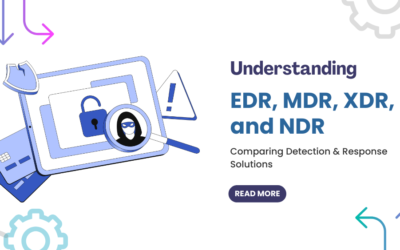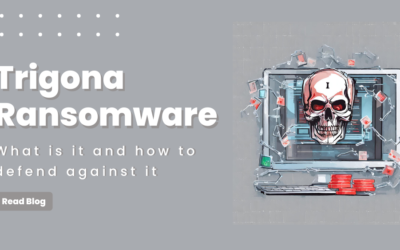What is Tiered Storage?
Tiered storage, or tiered data storage, is a storage networking technique where data storage is carried out on various types of storage media based on price, performance, availability and recovery attributes.
Storage tiering ensures that hot tier data, such as snapshots, backups, replicas of critical workloads and frequently accessed data, is stored on and available locally and accessible quickly. Similarly, infrequently accessed data, which may be useful for future use is stored on low-cost media to lower operational costs.
How Does Tiered Storage Work?
In order to better understand better the concept of tiered storage here is a paradigm. Mission critical data, or hot tier data, which is frequently accessed, has to be stored on expensive and high-quality media such as flash. This ensures that data accessibility and usage will be quick and so there will be no downtime. The hot tier data can also be stored on double parity RAID or redundant array of independent disks, in order to have fault tolerance and redundancy.
Similarly, infrequently accessed data is stored in less expensive media in the traditional Network Attached Storage (NAS) or Storage Area Network (SAN). As the number of storage tiers increase, cheaper storage media is deployed and thus tier three can contain data which is event driven or rarely used or has unclassified files, which can be stored in tape arrays or affordable cloud storage such as Azure cool blob or AWS S3-IA, etc.
Tiered Storage Architecture
Tiered data storage architecture can range from a simple two-tier storage architecture, which may consist of iSCSI or Fibre Channel (FC) attached disk and tape storage, or a more complex infrastructure with five to six or maximum ten tiers.
Regardless of the number of tiers, tiered storage architecture enables organizations to effectively leverage available storage resources, lower costs, and improve operational efficiency.
Tiered Storage Data Classification
Business data can typically be classified into the following tiers:
- Mission Critical Data – This is data necessary for business operation and requires expensive highspeed storage media for uninterrupted disruption-free access and usage. The loss or unavailability of mission critical data means loss of business and downtime. Examples include customer transactions, ticketing systems, etc.
- Hot Data – Data that is frequently used and constantly accessed is classified as hot data. Second only to mission critical data in priority, hot data also requires expensive and fast storage media. Examples include CRP, EHR applications and any application(s) that day-to-day business operations rely on.
- Warm Data – Infrequently used and a few days old data is classified as warm data. The storage media required for warm data focuses more on durability and cost-effectiveness over accessibility and read/write speeds. Warm data examples include information about tickets, older emails, etc.
- Cold Data – Rarely used/accessed or archived data is called cold data. The preferred storage media for cold data include tape arrays or cold cloud storage tiers such as Azure cool blob, AWS S3-IA, etc.
Types of Tiered Storage
Data center storage infrastructure can be divided into the following storage tiers:
Tier 0
Tier 0 or hot tier storage is best fit for mission-critical applications with little tolerance for latency and downtime. It’s expensive and faster than other storage media and purpose-built for highly volatile and time-sensitive workloads.
To deliver highspeed IOPS for mission-critical workloads, we use NVMe SSDs for tier 0 storage in our data center solutions.
Tier 1
Tier 1 storage is built to store hot data and high-performance workloads where only short delays are tolerable.
For tier 1 storage, StoneFly data center solutions support 10/14/16/18 TB 7200RPM 12GB SAS drives.
Tier 2
Tier 2 storage is best suited for infrequently-accessed warm data such as a few days old emails, recently completed transactions, etc. It may also be used to store data needed to creating monthly, quarterly or yearly business reports. As opposed to performance, tier 2 storage focus more on capacity and cost-effectiveness.
For tier 2 storage, StoneFly offers SATA drives and cloud storage in Azure, AWS, StoneFly private cloud, and other S3-compatible clouds.
Tier 3
Built for affordability and long-term retention, tier 3 storage is best suited for archiving and rarely accessed data.
For tier 3 storage, StoneFly offers hybrid storage appliances with SATA drives and cloud connect to Azure cool blob, AWS S3-IA, and more.
Advantages of Storage Tiering
Reduced Storage Costs
Tiered storage enables business owners to effectively leverage available storage resources by storing data based on performance and capacity requirements. Performance-intensive workloads are stored on highspeed storage media such as NVMe SSDs and older data is archived on SATA or cold cloud storage tiers.
With effective hardware and software storage tiering, infrastructure costs are minimized and data management is made easy and quick.
Increased Storage Efficiency
In addition to cost savings, the ability to store data based on performance and capacity requirements greatly boosts storage efficiency.
Tiered storage moves warm and cold data to capacity storage tiers, which reduces the demand on high performance disks (NVMe SSDs). This practice optimizes the storage infrastructure to deliver performance by using available resources effectively.
Reuse Old Storage Equipment
Storage tiering also enables business owners to reuse older idle storage equipment. Servers and storage appliances that are no longer able to support tier 0 or tier 1 workloads can still function for tier 2 or tier 3 data. With tiered storage, storage administrators can effectively use available resources and reduce the need to acquire hardware as data grows.
Storage Tiering versus Caching
Both storage tiering and caching enable faster data accessibility. The difference lies in how the algorithms use available storage for frequently accessed data.
Caching makes copies of frequently used data. It checks if a copy already exists and reads from slower storage.
Storage tiering on the other hand, identifies data and then moves it for use, without creating any additional copies.
Automated Storage Tiering in StoneFly Storage Solutions
Automated storage tiering enables policy-based data transfers between storage tiers as per user performance and capacity requirements. The feature effectively uses available tiered storage architecture and reduces data management complexity via automation.
The automated storage tiering feature is a built-in capability of StoneFly’s patented storage operating system – StoneFusion™.
The following StoneFly solutions offer automated storage tiering as a built-in feature:
- Super Scale Out (SSO) NAS Appliances
- On-premises and cloud S3 object storage solutions
- Unified storage solutions
- Unified Storage & Server (USS) Hyperconverged Solutions
In addition to effectively utilizing on-premises tiered storage architecture, StoneFly storage OS also enables cloud storage integration as tier 3 storage.
With StoneFly’s cloud storage gateway, storage administrators can integrate the following cloud storage tiers:
- Azure cloud storage (hot and cool blob)
- AWS S3 cloud storage (S3 & S3-IA)
- Any other S3 compatible cloud
- StoneFly Private Cloud
Note: All StoneFly solutions come with built-in cloud gateway and do not require an add-on/external cloud storage gateway.










